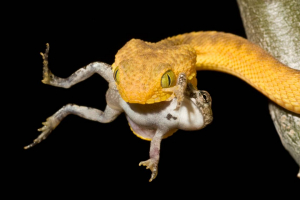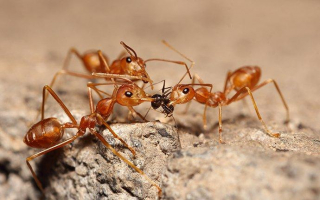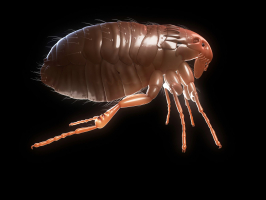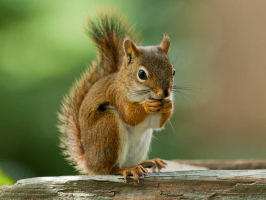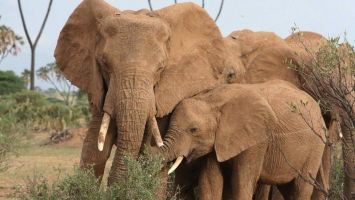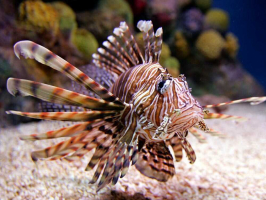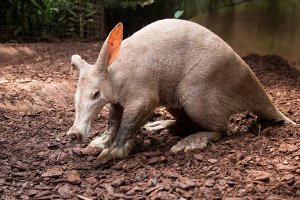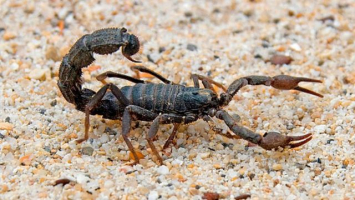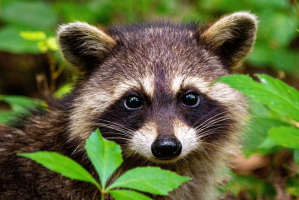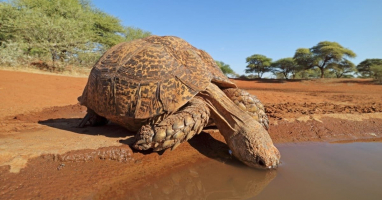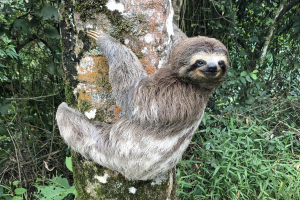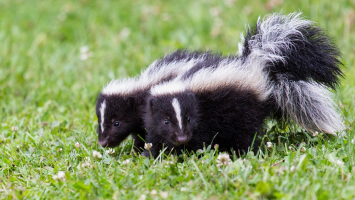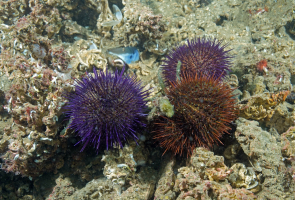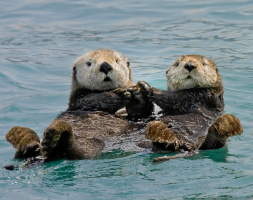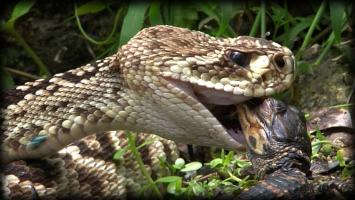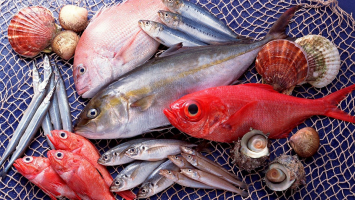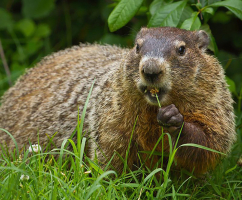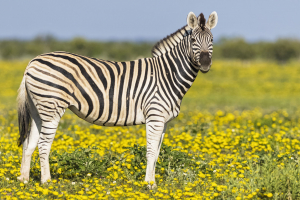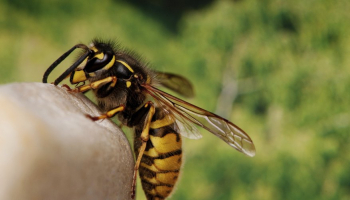Top 9 Predators Of Seagulls that Eat Seagulls
Large water birds, and seagulls have a classic white body and gray-to-black feathering. Don't underestimate these birds just because they appear commonplace at ... read more...first look. They are highly intelligent beings with excellent memories and highly developed communication abilities utilizing both vocalizations and body motions. Seagulls are also highly adaptable and can live in both freshwater and ocean, which is the cherry on top. Nevertheless, despite all these advantages, they occasionally become prey to a larger, stronger predator. Let's find out with Toplist the predators of seagulls that eat seagulls.
-
There are roughly 40 species of falcons in the genus Falco, which is a group of raptors. Except for Antarctica, where closely similar raptors did exist in the Eocene, falcons are extensively spread over every continent in the world.
The falcons, another raptor that is exceedingly deadly to seagulls and their young, cannot be ignored if we're talking about dangerous raptors. Who knows why? Let's investigate by reading on.
Falcons have extraordinary eyesight, much like many other raptors do. Seagulls can't compete with falcons since they are quicker and nearly twice as big as the latter. The falcons' talons, meanwhile, are the most important component that helps them. The three frontal and one posterior talon that falcons share with all other raptors enable them to grab their prey with great force.
A falcon will squeeze seagulls it has caught until they cease breathing; this is a frequent method of killing among raptors. The falcons prey on seagulls that are not roosting in a group, much like other raptors do. The ability of a flock of seagulls to chase off falcons. A seagull is therefore most vulnerable to raptors when it is flying or roaming alone in the air.
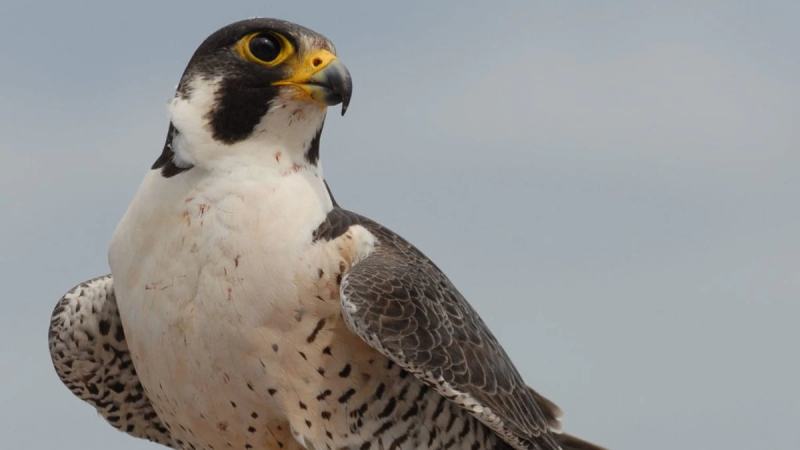
Photo: WOWT - Peregrine falcon chicks hatch atop Mutual of Omaha headquarters 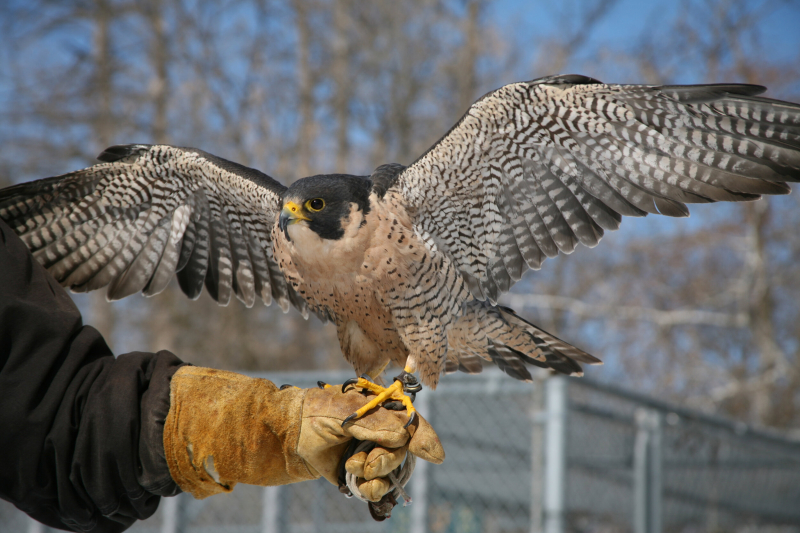
Photo: Wildlife Science Center - Peregrine Falcon -
In a rather ironic twist, one of the most common predators of seagulls that eat seagulls is another bird, eagles.
Eagles are raptors that hunt on nearly all species of birds, therefore it is not surprising that they prey on seagulls. Eagles have wonderful lives, hunting and preying on other birds, including seagulls, because there are basically no other animals (apart from humans) to hunt them down. When it comes to hunting, eagles are significantly more proficient than seagulls. Additionally, eagles outperform seagulls in practically every category, making them simple prey. An eagle won't often swoop down into a group of seagulls and pick one down, but they frequently target the birds that are at the borders of the roost. Since eagles are seldom seen close to cities, these are more prevalent in regions with a lot of mountains.
In every physical category, including strength and speed, eagles are superior to seagulls. This makes choosing seagulls for the Eagles simple. When seagulls are roosting in groups, an eagle often hunts the one that is a little farther away from the roost. By using this strategy, eagles may capture prey without having to deal with the flock's protection.
One of the most frequent predators of seagulls is the eagle. Strong talons on the limbs of these raptors are essential for attacking and killing seagulls.
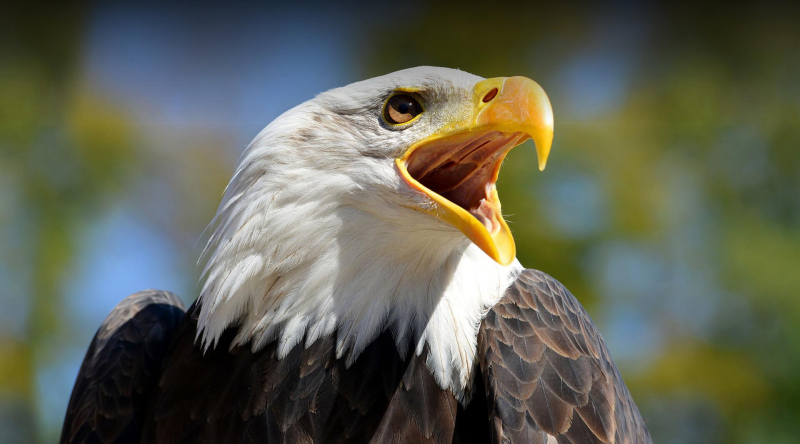
Photo: San Diego Zoo - Bald Eagle 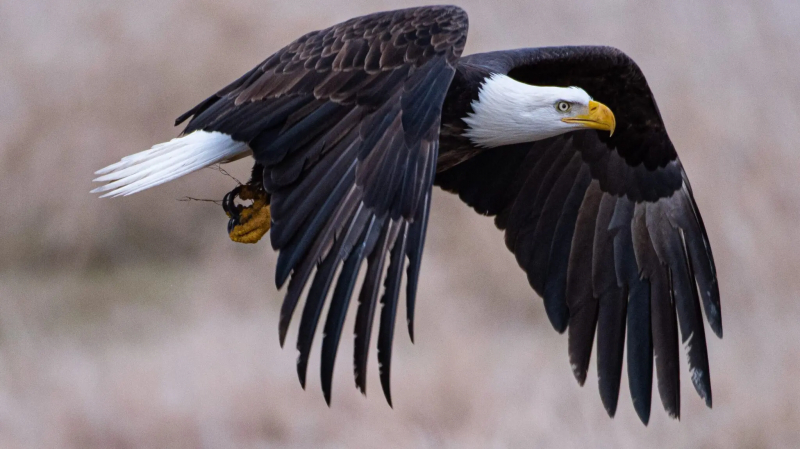
Photo: BirdLife International - Eagle -
Mammals belonging to the genus Mustela and family Mustelidae are known as weasels. There are the fewest weasels, polecats, stoats, ferrets, and European mink in the genus Mustela. Small, energetic predators with long, thin bodies and short legs make up this genus. Weasels prey on tiny animals and have occasionally been regarded as pests because certain species stole chickens from farms or rabbits from commercial warrens. Weasels eat small mammals. On the other hand, they do consume a lot of rodents. Their distribution includes minor parts of North Africa as well as Europe, North America, much of Asia, and South America.
Can you guess what weasels are most hazardous for? They hunt together. Weasels are indeed considered to be one of the main predators of seagulls. They are relatively little creatures, but they are strong since they like to hunt in packs.
If weasels were to chase seagulls by themselves, they would have little chance of success. However, because they roam in packs, they have the ability to kill not just one seagull but a whole flock of birds. Weasels also eat the eggs and young of seagulls. They constantly scan the horizon for opportunities, and when they do, they use the moment to assault their eggs and nestlings.
Due to their quick metabolism, weasels need to eat regularly. Weasels will eat nearly anything that comes their way to satisfy their voracious hunger. Rats, rabbits, birds, and frogs, including their eggs and young, are their main sources of food.
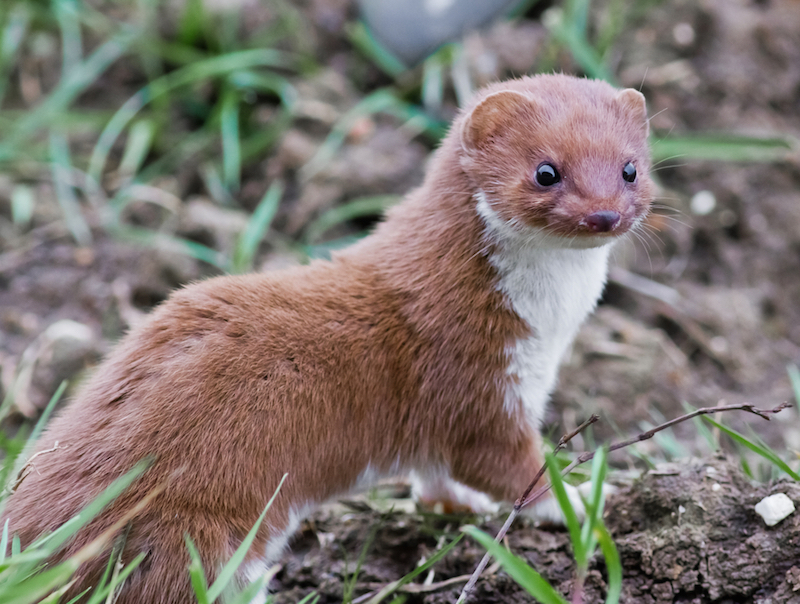
Photo: Live Science - Weasels 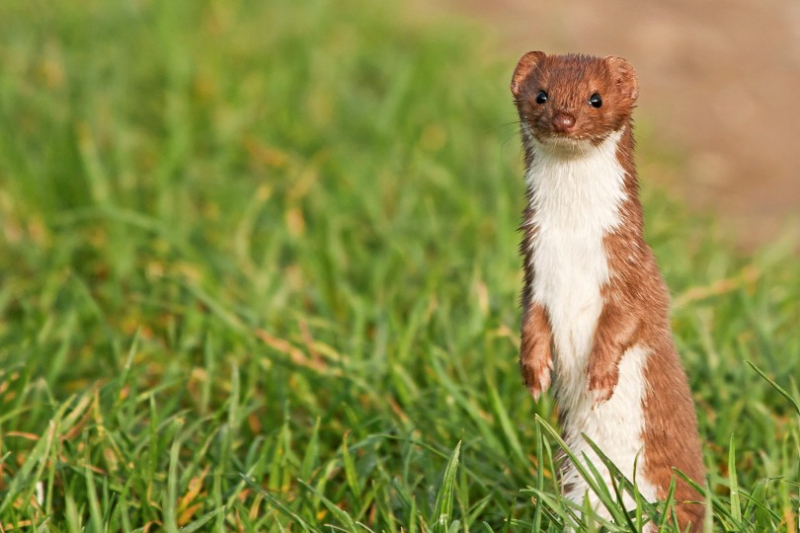
Photo: Norfolk Wildlife Trust - Weasel -
Foxes are well-known carnivores that feed on a variety of birds and other animals. Foxes, however, like to be close to metropolitan areas since they have better access to food sources there. The gulls, on the other hand, are water birds that are seldom found close to populated areas. How can foxes feed on seagulls, you ask?
Well, in nature, foxes and seagulls seldom come into contact. But if they do, it seems quite clear who would prevail between the two. Foxes may even try to attack gulls that are roosting in a group because they have a more powerful killing mechanism and can quickly take down a number of seagulls.
Foxes prefer to have an abundance of food, so they go hunting more frequently. Foxes pose a risk to the gulls notwithstanding their rarity. On the other hand, before the foxes arrived, our feathery allies had figured out how to fight them. A bunch of seagulls' instinct urges them to be wary whenever they detect cartilage from their own species laying around. They thus take the appropriate steps to protect themselves.
After learning about the two main terrestrial predators of seagulls, foxes and weasels, let's move on to the water animals that pose a threat to the birds.
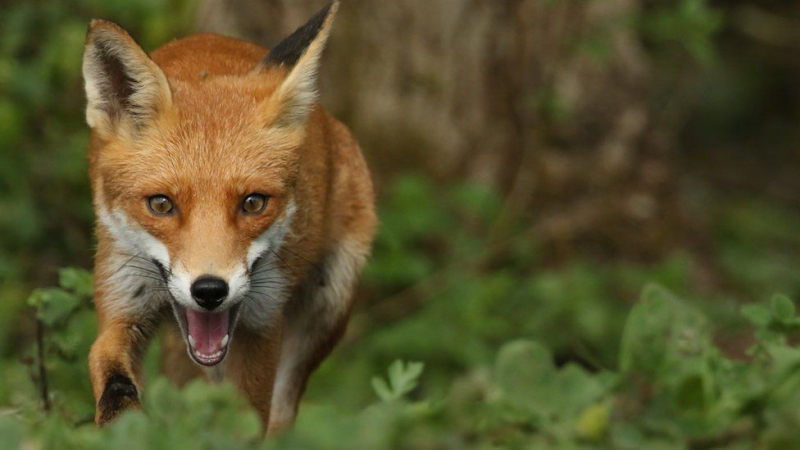
Photo: BBC - a fox 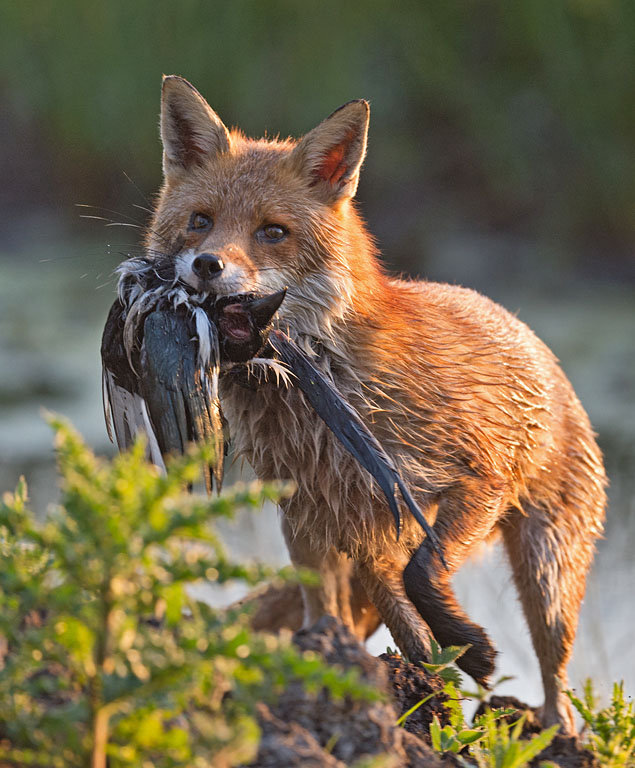
Photo: Wildlife Online - Fox eat seagull -
Sharks are the most deadly predators for seagulls of all the aquatic animals we will be talking about in this article. As carnivorous members of the Lamnidae family, sharks are already known to significantly rely on flesh for food. Additionally, it is well known that these fish are apex predators. So it should not be surprising that they can swallow whole birds at once.
Do you want to know how sharks capture gulls? Seagulls, as you may already be aware, flit about the ocean and beaches in search of food. The danger starts when they occasionally fly too near to the ocean's surface. When a shark spots a seagull, it dives deep into the water and snags the bird. But how could these large fish find a seagull in such a short amount of time?
Sharks, on the other hand, have surprisingly good eyesight and can see clearly at a distance of over 10-15 meters. They can therefore readily identify a seagull flying too close to the water's surface even from underwater and strike before the bird even realizes what struck it.
Anyone who has seen images of a shark will be aware of its enormous mouth, which is large enough to effortlessly engulf many birds at once. Consequently, when they attack a bird while opening their lips, the bird has little to no chance of escape.
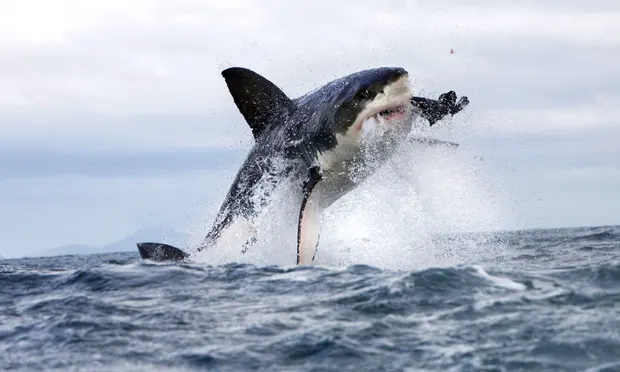
Photo: The Guardian - Rare shark attack in Maine 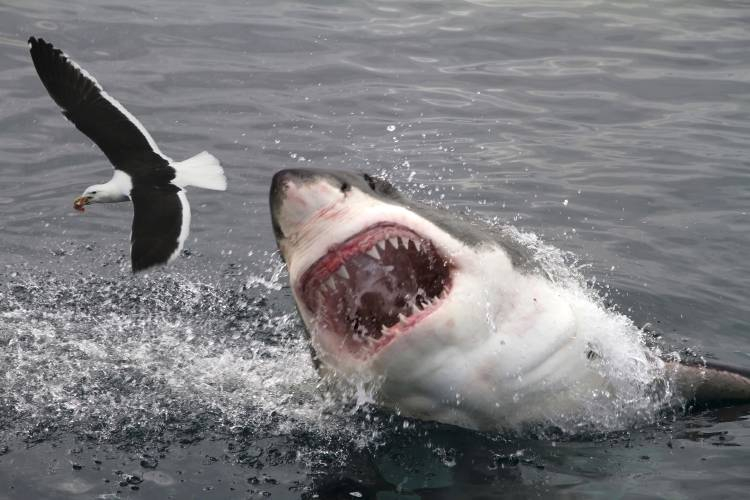
Photo: Dreamstime.com - Seagull on shark -
Large semi aquatic reptiles that inhabit across the tropics in Africa, Asia, the Americas, and Australia are known as crocodiles (family Crocodylidae).
The size, shape, behavior, and ecology of different species of crocodile vary slightly. They also have a lot of commonalities in these other areas, too. All crocodiles are semiaquatic and tend to gather in freshwater environments like rivers, lakes, and wetlands, however occasionally they can also be found in brackish and saltwater. They are carnivorous creatures that mostly consume vertebrates including fish, reptiles, birds, and mammals. Depending on the species and age, they may occasionally consume invertebrates like molluscs and crabs. Since they are all tropical species, crocodiles are far more vulnerable to cold than alligators are. Around 55 million years ago, during the Eocene period, they split apart from other crocodilians. Many species are in danger of going extinct, and some of them are considered highly endangered.
Crocodiles are occasionally observed preying on seagulls and their eggs. Although they are aquatic, these dangerous, ancient reptiles are not found in seas. The two seldom meet paths since seagulls, as their name implies, like to live on seashores.
Crocodiles do, however, occasionally hunt on seagulls. Crocodiles, like sharks, are large-mouthed animals that prey on birds of prey as they fly near the water's surface.
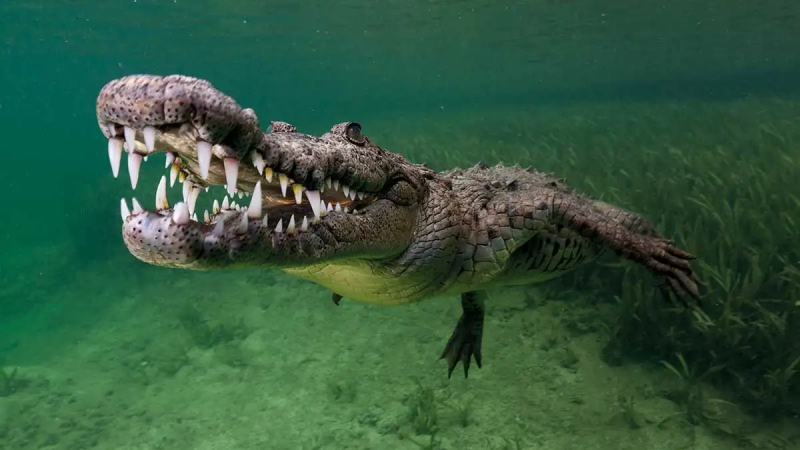
Photo: New Scientist - Crocodile emerging from the gloom 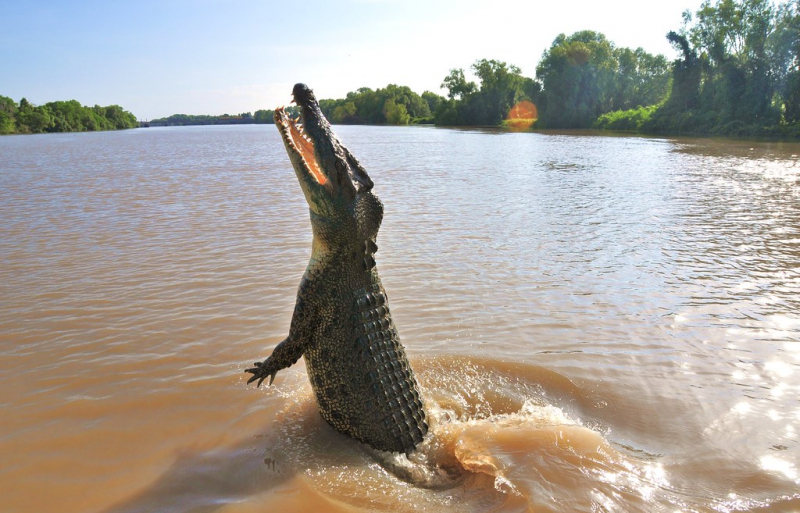
Photo: Animal Queries - Crocodile -
One of the rarest and most unexpected predators of seagulls is the octopus. On a few rare occasions, beachgoers have seen an octopus assault and consume a seagull. Octopuses are adaptable animals with intricately designed bodies that utilize their tentacles to seek, squeeze, and restrict their food.
Some octopuses reside in the intertidal zone while others are found at the bottom of the ocean, including coral reefs, pelagic seas, and the seafloor. Most species are short-lived, develop swiftly, and reach maturity early. In the majority of species, the female lays fertilized eggs in a den and tends to them until they hatch, at which point she too passes away. The male, meanwhile, uses a specially modified arm to deliver a bundle of sperm directly into the female's mantle cavity, at which point he becomes senescent and dies.
Octopuses are more likely to assault a seagull on the beaches since they can walk on land as well. And although seagulls take off as soon as they are alerted to the presence of a predator nearby, there are instances when they are unable to do so. It is exciting to see an octopus grab a seagull that is trying to fly using its sensory tentacles.
Another remarkable trait of octopuses is their ability to blend in with their environment. They are capable of squashing themselves. In other words, a big octopus weighing 100 pounds may simply squeeze through a little hole in the ground. They have an edge over seagulls who can fly because of this. Once established, the octopus may quickly capture seagulls that are present on land.
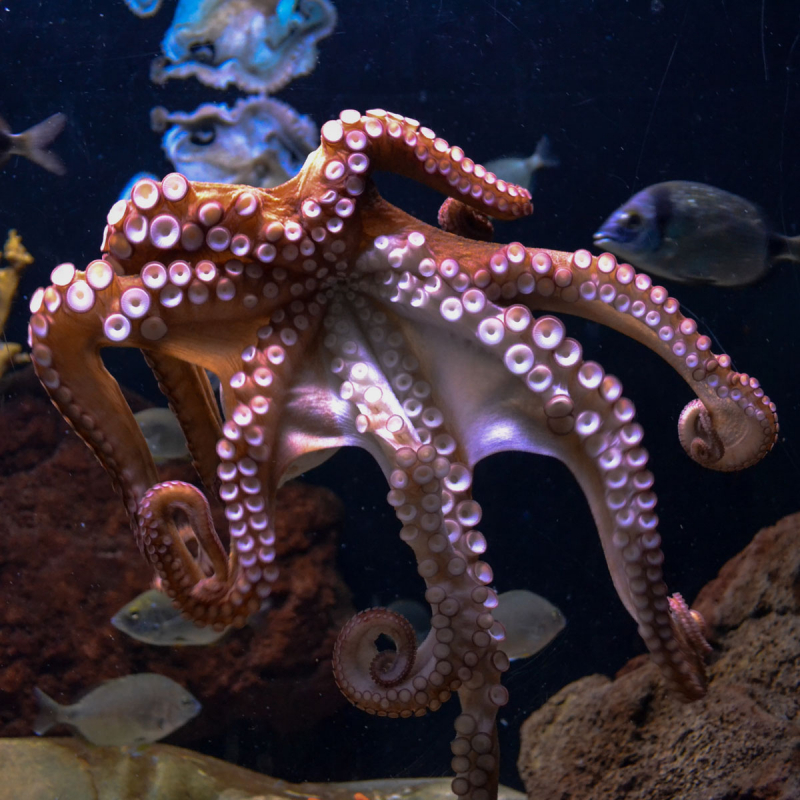
Photo: DIVE Magazine - Octopus 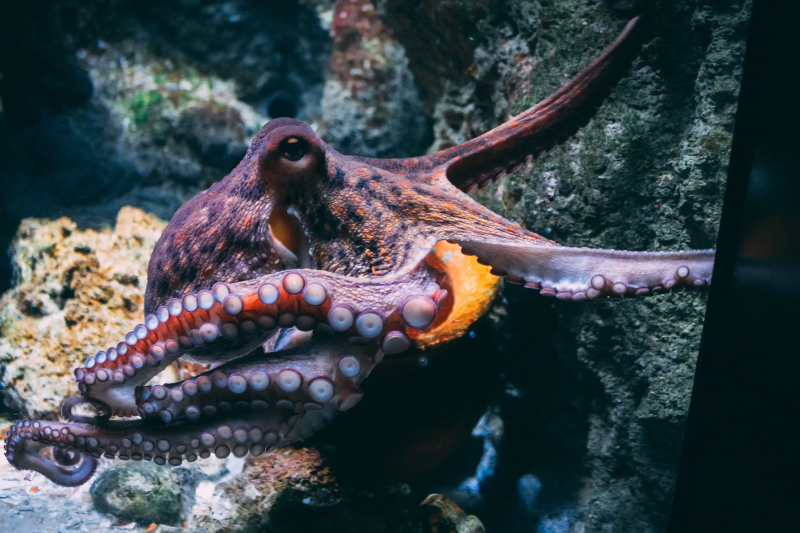
Photo: Daily Maverick - octopus -
It's crucial to note that dolphins are rarely observed pursuing seagulls before we talk about dolphins. Dolphins are a common animal. The majority of animals like the tropical regions' warm seas, although others, like the right whale dolphin, choose cooler climes. The majority of dolphins eat fish and squid, but some, like the orca, also eat huge animals like seals. Female dolphins only mate once every two to three years, but male dolphins frequently mate with several females each year. Dolphins and birds have been observed working together to go fishing, though. Don't you think that sounds fascinating?
Dolphins and birds have a mixed connection; some are pals, while others are adversaries. Additionally, as we all know, dolphins typically dive on the water's surface, making it simpler for them to attack a seagull. However, dolphins seldom attack seagulls with the intention of eating them.
Dolphins and seagulls both like catching fish as prey. So when they fight it's typically because they're chasing fish. Additionally, dolphins will not think twice to assault and perhaps even kill seagulls when they are pursuing the same prey.

Photo: Pinterest - Seagulls and dolphin 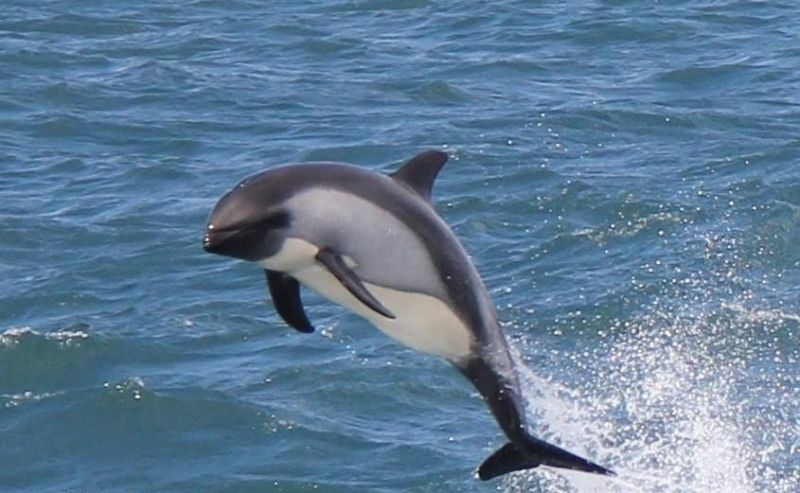
Photo: Pinterest - Chilean Dolphin -
Hawks, which are typically ranked just behind eagles as the most hazardous raptors, are also included in this classification. They are notorious for using brutal techniques to hunt and kill other animals. Hawks are also one of the predators of seagulls that eat seagulls, they prey on seagulls and their young ones.
Hawks have powerful, pointed talons that they employ for hunting, just like other raptors. It's important to note that hawks have been observed using seven various techniques to dispatch of birds, adapting their tactics in response to the size and speed of their prey.
For fearsome raptors like hawks, seagulls are an easy target, yet we have found one consistent trait of hawks while attacking virtually any bird. They typically target birds that are away from the center of the swarm or at the perimeter of a roost. Although it is expected that hawks would prevail in a one-on-one conflict with a seagull, hawks really prefer to avoid fighting altogether.
Regarding hawks, it's also interesting to note that they have a fairly poor success rate in the hunt. Hawks employ seven distinct hunting techniques, yet only 10% of their hunts are successful.
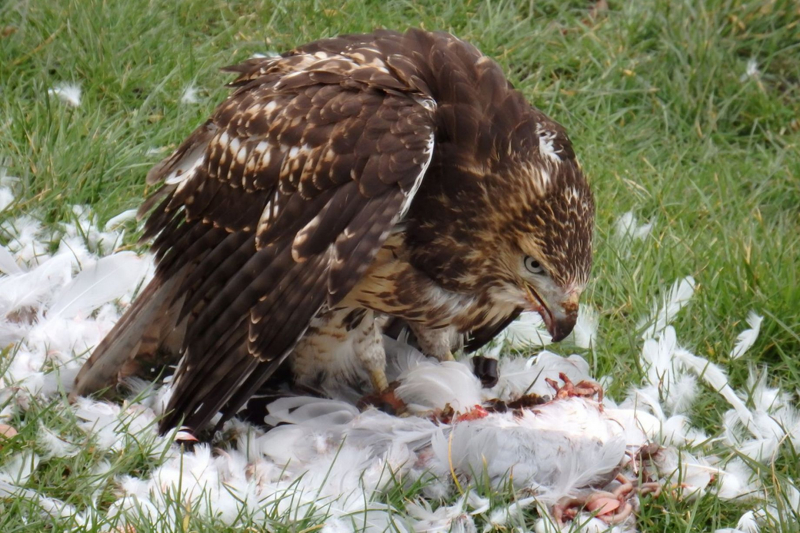
Photo: The Mirror - Hawk eats seagull in public park 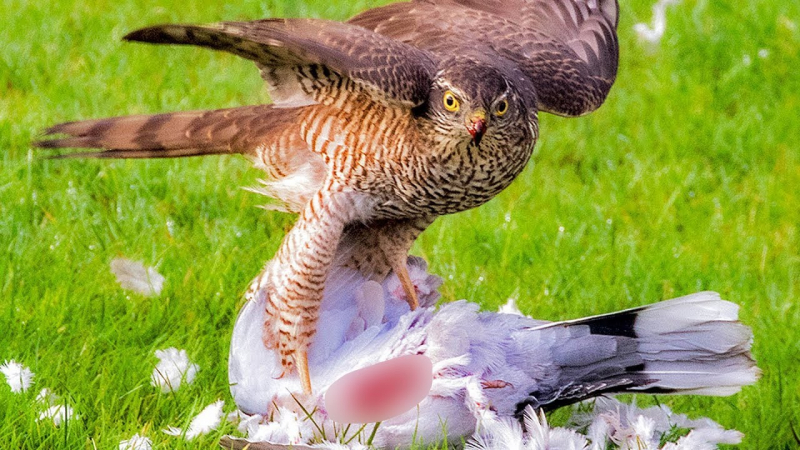
Photo: YouTube - hawk attack seagull











